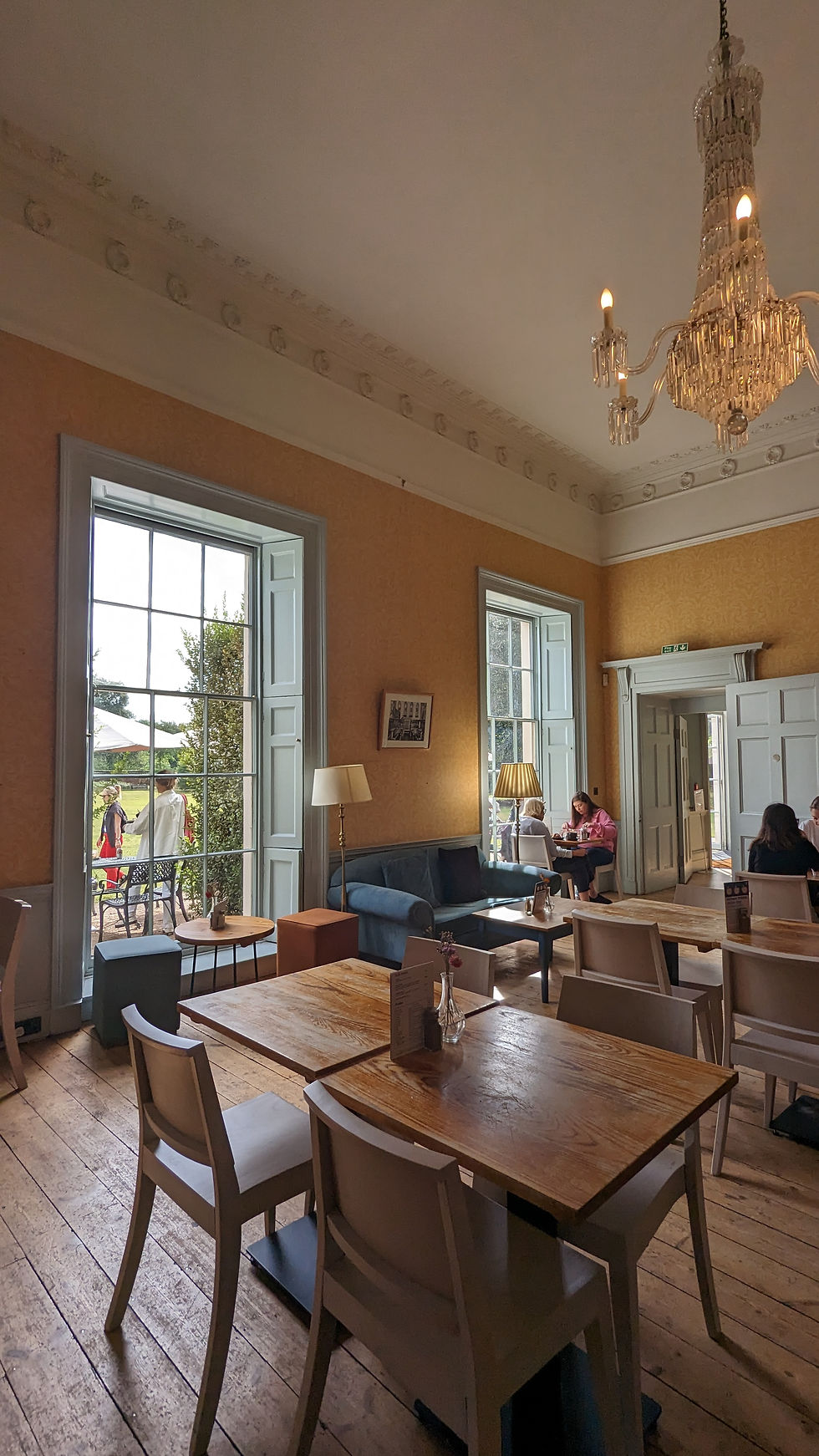When You Look for a Cafe but Find a Palace
- Catja Christensen

- Sep 24, 2023
- 3 min read
Updated: Dec 1, 2023

On September 21, Catja went to her fourth day of orientation week at Roehampton and was finally getting used to her hour-and-a-half long commute. She started the day with a West African dance class taught by a second-year MFA Dance student and felt the happiest she’d been all week. It reminded her of the Ghana dance class and trip she took at Conn in her final semester. Little did she know that this was just the first of many unexpected reminders of her West African adventures.
Around noon, Catja walked to the bus stop at Roehampton and rode until the end of the line at Putney Bridge. Instead of immediately hopping on the Tube home, she decided to explore Putney/Fulham area. Although it was a warm, sunny day, she knew that the typical London afternoon rain was imminent, so she Googled nearby cafes to camp out in. The closest one to the bus stop was Fulham Palace Cafe, which sounded fancy, so she started heading there.
She took a beautiful walk through a cemetery in a grove of trees, down the perfectly straight paths of a walled garden, past a cart selling wildflowers and herbs, and down a long grassy lawn to the palace. She ordered a mocha (pronounced mock-uh here) from the cafe and sat on a couch to work on an article.
Zoe joined her soon after from a work-from-home day in the flat, and they headed to the main entrance to see the museum exhibits. They learned that Fulham Palace was the former home of the Bishop of London since medieval times, but every bishop since 1973 has resided in private, less grand homes closer to central London. Fun fact: the current bishop is a woman! Feminism!
The palace was then leased by the Hammersmith Council to open a public garden, art gallery, and museum documenting its history.
Surprisingly, this history was not primarily focused on the bishops who lived there over hundreds of years. Rather, the museum focused on the people who unwillingly financed the huge, beautiful property: the enslaved Africans who the bishops, along with many wealthy British families, profited off through the Atlantic slave trade. Although the Bishop of London represents the Church of England, and the palace includes a chapel with large-scale religious iconography and stained glass windows, the exhibits gave detailed explanations of African spiritual traditions
Obeah, a term relating to spiritual traditions used by enslaved Africans in North America and the Caribbean, was a prominent theme throughout. Obeah both empowered enslaved people while also being a dangerous practice. Enslavers would severely punish obeah practitioners since the practice was a form of resistance.
There were also exhibits on the significance of hairstyles, dance, song, and art in protecting cultural traditions while also being a form of communication when enslaved Africans all spoke different languages. These art forms enabled enslaved people to communicate without their enslavers knowing.
Catja was wearing the shirt she bought in Ghana with the “Sankofa” Adinkra symbol, a variation of the tattoo she has on her right tricep. The museum path was marked with the Kwatakye Atiko symbol, named for a brave Asante war captain, that represents fearlessness. The exhibits reminded her of all she learned in Ghana. In March, she visited Elmina Castle and Cape Coast Castle, two of the largest slave dungeons and shipping sites in West Africa. Now, in London, she was reading about the castles from the home of the men who benefitted from the enslaved Africans’ suffering. At the start of the museum, there was a replica of the "Door of No Return" sign on the wall, setting the tone for what was to come. All of these memories and exhibits made her dance class that morning feel even more significant.
The Fulham Palace Museum and Cafe was an unexpected gem. We love that we can take the train to places like Richmond, Wimbledon, and Putney/Fulham and unintentionally discover such amazing historical sites. A walk to a cafe turned into a history lesson about the transatlantic slave trade’s lasting impacts in Britain.
Life here is full of unexpected surprises, like when we saw that Brennan Johnson was on the Spurs starting 11 lineup against Arsenal… but we are lucky that our surprises have been good ones so far!




Wow, Catja, this whole experience at the Fulham Palace Cafe is just brimming with synchronicity!!!